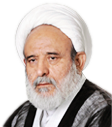The Mahdi is not only an embodiment of the Islamic belief but he is also the symbol of an aspiration cherished by mankind irrespective of its divergent religious doctrines. He is also the crystallization of an instructive inspiration through which all people, regardless of their religious affiliations, have learned to await a day when a heavenly mission, with all its implications, will achieve their final goal and the tiring march of humanity across history will culminate satisfactorily in peace and tranquillity. This consciousness of the expected future has not been confined to those who believe in the supernatural phenomena but has also been reflected in the ideologies and cults which totally deny the existence of what is imperceptible. For example, dialectical materialism which interprets history on the basis of contradictions believes that a day will come when all contradictions will disappear and complete peace and tranquillity will prevail. Thus we find that this consciousness experienced throughout history is one of the widest and the commonest psychological experience of humanity.
The religion, when it endorses this common consciousness and stresses that in the long run this world will be filled with justice and equity after having been filled with injustice and oppression, gives it a factual value and converts it into a definite belief in the future course of humanity. This belief is not merely a source of consolation, but it is also a source of virtue and strength. It is a source of virtue because the belief in the Mahdi means the total elimination of injustice and oppression prevailing in the world. It is a source of inexhaustible strength because it provides hope which enables man to resist frustration, howsoever, hopeless and dismal the circumstances may be. The belief in the appointed day proves that it is possible for the forces of justice to face the world filled with injustice and oppression, to prevail upon the forces of injustice and to reconstruct the world order. After all prevalence of injustice, howsoever dominant and extensive it may become, is an abnormal state and must in the long run be eliminated. The prospect of its elimination after reaching its climax, infuses a great hope in every persecuted individual and every oppressed nation that it is still possible to change the state of affairs.
Although the concept of the Mahdi is more wide spread than the Muslim community, yet its detailed features, as determined by Islam, meet more fully all the aspirations attached to it since the dawn of history. They are in greater conformity with the feelings and sentiments of the oppressed and the persecuted of all times. It is Islam which has given a concrete shape to an abstract idea. It is no longer necessary to look forward to an unknown saviour who may come into the world at a distant future. The saviour is already here and we simply have to look for the day when the circumstances are ripe for him to appear and begin his great mission. The Mahdi is no longer an idea. He is no longer a prophecy. We need not wait for his birth. He already exists actually and we only wait for the inauguration of his role. He is a specific entity living among us in his real human form and shares our hopes and disappointments and our joys and griefs. He witnesses all the acts of oppression and persecution which are perpetrated on the face of the earth and, somehow or another, he himself is affected by them. He is anxiously awaiting the moment when he will be able to extend his helping hand to everyone whom any wrong has been done and be able to eradicate injustice and oppression completely.
Although this Awaited Saviour is living among us, waiting for the appointed moment for his advent, yet he is ordained not to proclaim himself nor to disclose his identity.
It is evident that the concept of the Mahdi, with its Islamic features, shortens the gap between the oppressed and the expected saviour. It spans the bridge between them, howsoever long the period of waiting may be.
When we are asked to believe that the Mahdi is a particular person already living a normal life, we are also expected to believe that the idea of absolute eradication of every kind of injustice and oppression by the Mahdi has already been embodied in the person of the Awaited Saviour who will reappear while he will be, as the tradition says, 'owing no allegiance to any tyrant'. The belief in him means the belief in eradication of all evils in a concrete form.
The tradition urges the believers in the Mahdi to keep on waiting for him and to continue looking forward for solace. The idea is to establish a close spiritual and intuitive link between the believers, on the one hand, and the Mahdi and all that he stands for, on the other. It is not possible to establish such a link without believing that the Mahdi has already been born and is a living and a contemporary personality.
Thus we find that the concept of the living Mahdi has given a new impetus to the idea of an expected saviour. It has made it a source of effective strength and consolation to every person suffering from deprivation and injustice, a person who rejects all forms of tyranny because he feels that his Leader, being a contemporary and a living personality and not a future idea, shares his sufferings and feels his misery.
Yet this concept, being beyond the imagination and comprehension of a number of people, has led them to adopt a negative attitude towards the very idea of the Mahdi.
source : http://abna.ir













